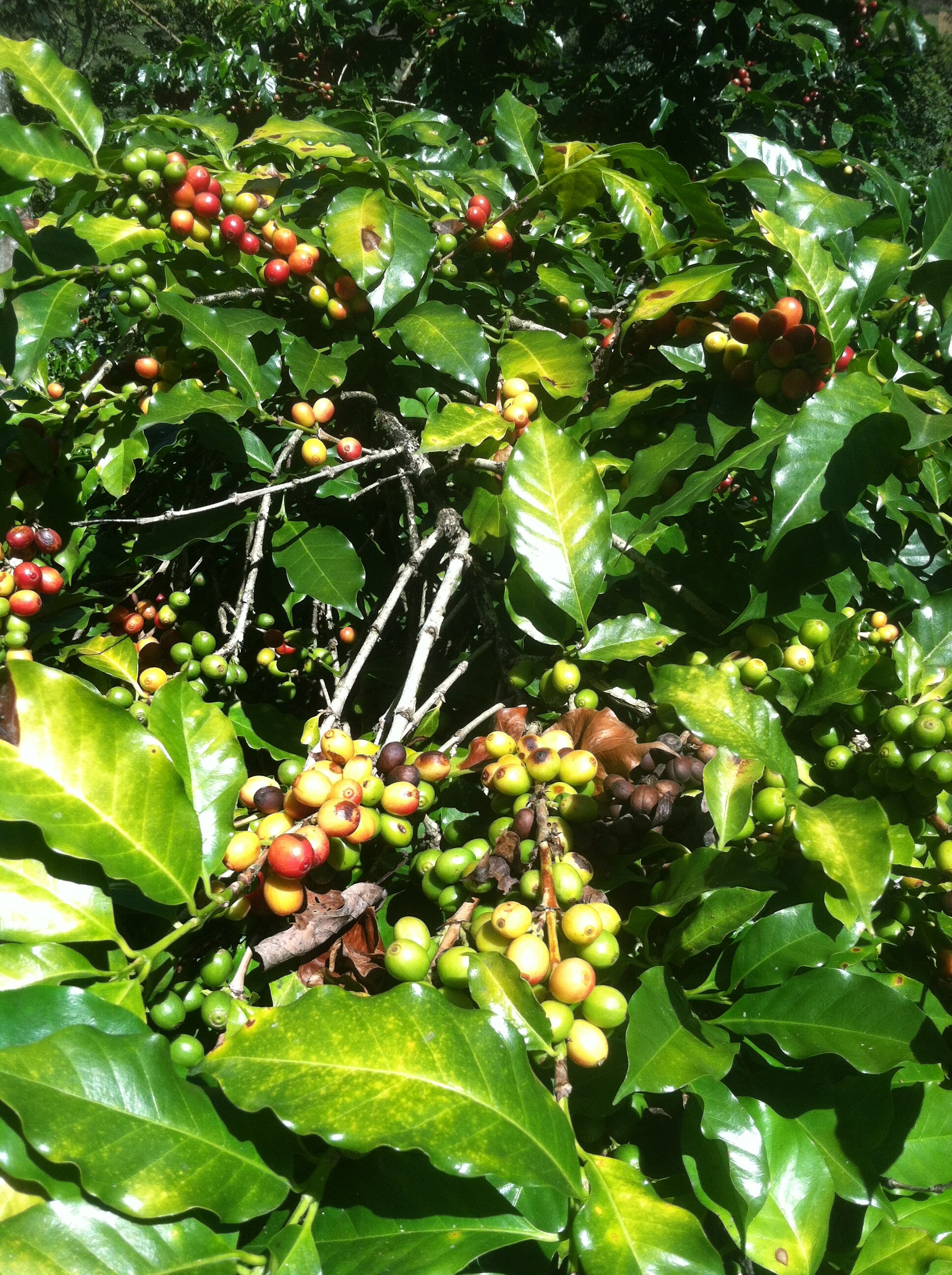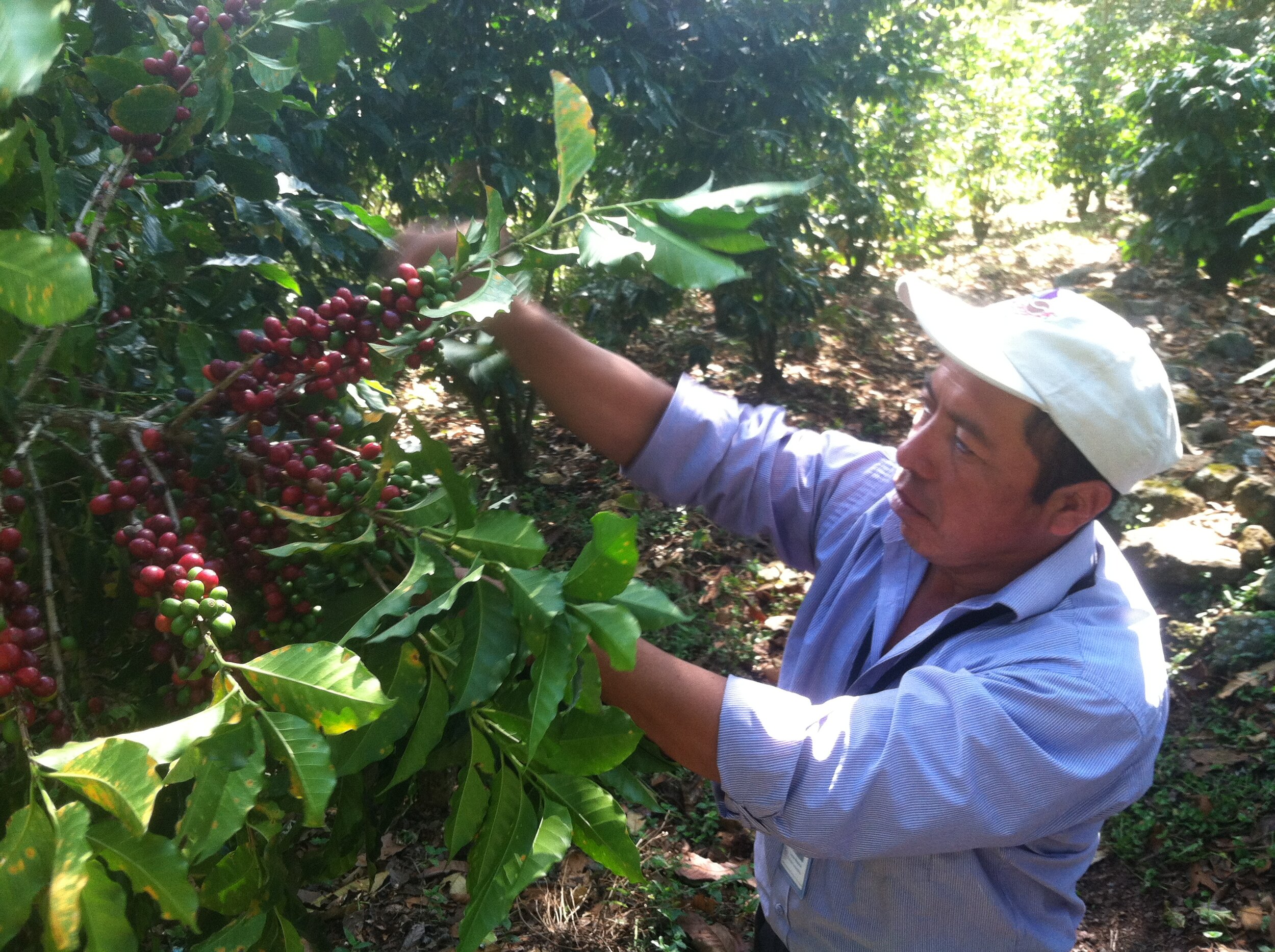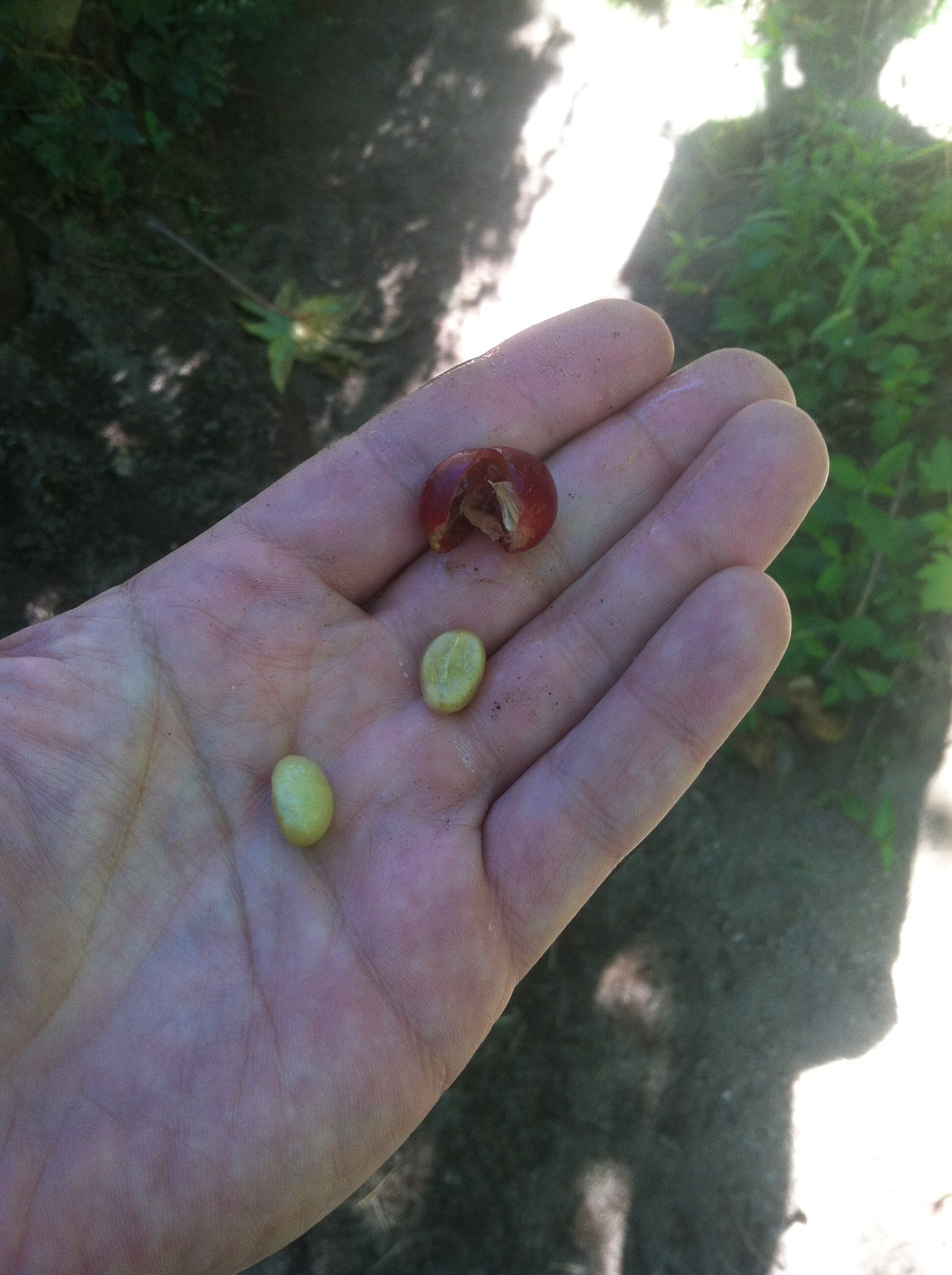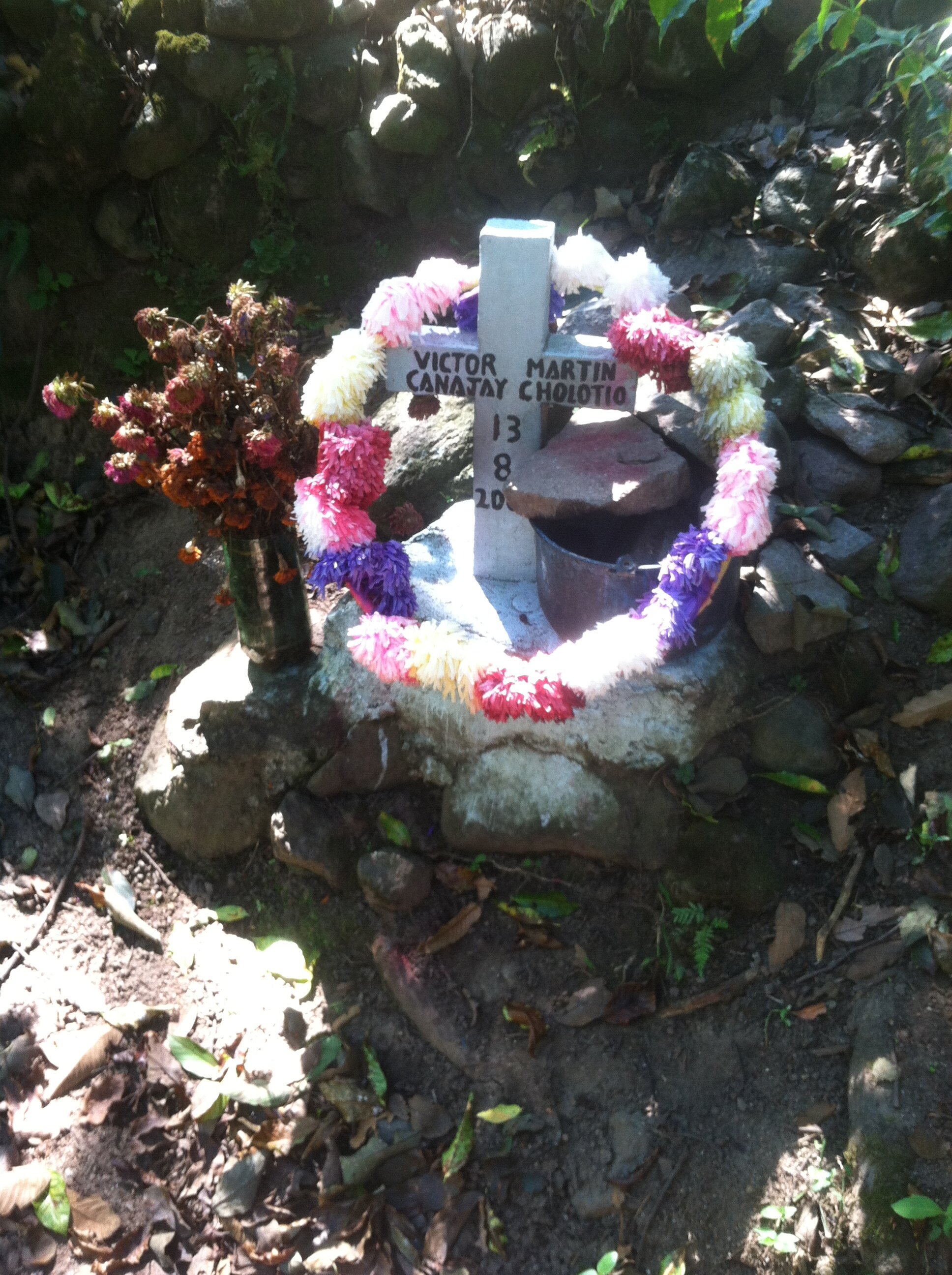5 Interesting Facts From Our Guatemalan Coffee Farm Tour
 Check out: Our Trek Through Central American Coffee CountryMy father and I recently returned from a trip through Central America, visiting the farmers, roasters, and other people behind some of the best coffee (and chocolate) that we often take for granted.While we were there, we toured the coffee lands of Cooperativa La Voz, where guide Lucas Bizarro explained to us where coffee comes from, starting with a plant in the ground and ending with coffee in our cup. I wondered what would be the best way to present just how much we learned on this tour. I've written about origin trips and farm tours from trips to Hawaii. And while the poverty in a country like Guatemala makes it starkly different from Hawaii, the coffee grows similarly. Not to mention that my Spanish, while workable, misses a lot of the finer points of the tour. Long story short, I hope you enjoy these five interesting facts that came from the tour.
Check out: Our Trek Through Central American Coffee CountryMy father and I recently returned from a trip through Central America, visiting the farmers, roasters, and other people behind some of the best coffee (and chocolate) that we often take for granted.While we were there, we toured the coffee lands of Cooperativa La Voz, where guide Lucas Bizarro explained to us where coffee comes from, starting with a plant in the ground and ending with coffee in our cup. I wondered what would be the best way to present just how much we learned on this tour. I've written about origin trips and farm tours from trips to Hawaii. And while the poverty in a country like Guatemala makes it starkly different from Hawaii, the coffee grows similarly. Not to mention that my Spanish, while workable, misses a lot of the finer points of the tour. Long story short, I hope you enjoy these five interesting facts that came from the tour.
[ad#Google Adsense - use me]
 Fact #1: Coffee as we know it starts as a cherryI still remember the first time I walked into a Starbucks and saw their display showing the coffee cherry. I'd never heard of it, and didn't believe it really existed.The two pictures you see to the left both show coffee as it grows, in cherry form. The cherry ripens from a yellow to green to red, and finally a dark red, at which point the cherry is best to be picked. If it is not picked at this stage, it will overripen to a brown or black color.Coffee workers are responsible for picking the cherry at the optimal dark red color to ensure the highest quality of coffee.
Fact #1: Coffee as we know it starts as a cherryI still remember the first time I walked into a Starbucks and saw their display showing the coffee cherry. I'd never heard of it, and didn't believe it really existed.The two pictures you see to the left both show coffee as it grows, in cherry form. The cherry ripens from a yellow to green to red, and finally a dark red, at which point the cherry is best to be picked. If it is not picked at this stage, it will overripen to a brown or black color.Coffee workers are responsible for picking the cherry at the optimal dark red color to ensure the highest quality of coffee.  Fact #2: Inside each coffee cherry are two coffee beansThey're not quite coffee beans yet. However, the coffee bean as we know it today is one of two halves of the "seed" of coffee cherry. As you can see in the picture to the left, if you break open the berry, you can see that it holds two coffee beans as we know them.In the process of producing coffee beans, the red berry pulp that you see to the left is discarded, and recycled. The "beans" are then cleaned, and dried in the sun. More on that to come later.
Fact #2: Inside each coffee cherry are two coffee beansThey're not quite coffee beans yet. However, the coffee bean as we know it today is one of two halves of the "seed" of coffee cherry. As you can see in the picture to the left, if you break open the berry, you can see that it holds two coffee beans as we know them.In the process of producing coffee beans, the red berry pulp that you see to the left is discarded, and recycled. The "beans" are then cleaned, and dried in the sun. More on that to come later.  Fact #3: Coffee workers are hard-working...and poorI'll take it a step further. Coffee workers at the source are arguably the hardest-working and the poorest people in the coffee chain. Regardless of what we pay for coffee, the worker receives a pittance.We found these three children to the left sitting in the dirt while their mother and grandmother worked in the fields. If they were tall enough to pick the ripe cherry from the trees, I'm sure they'd be working.Their grandmother was standing beside me and I asked if she minded if I took a picture of her. She politely declined. When I turned around to see where their mother was, I found her "hiding" behind a thin tree that barely disguised her. As you can see from the picture, while their parents were shy or possibly superstitious, the children were much less inhibited.
Fact #3: Coffee workers are hard-working...and poorI'll take it a step further. Coffee workers at the source are arguably the hardest-working and the poorest people in the coffee chain. Regardless of what we pay for coffee, the worker receives a pittance.We found these three children to the left sitting in the dirt while their mother and grandmother worked in the fields. If they were tall enough to pick the ripe cherry from the trees, I'm sure they'd be working.Their grandmother was standing beside me and I asked if she minded if I took a picture of her. She politely declined. When I turned around to see where their mother was, I found her "hiding" behind a thin tree that barely disguised her. As you can see from the picture, while their parents were shy or possibly superstitious, the children were much less inhibited.  Rule #4: It is not always safe workHazards exist in any job. In a work environment like this one however, there are few if any precautions taken with regards to those hazards. To the left is a memorial for Victor Martin Canajay Cholotio, who fell to his death from the top of the tree cover.Production of a quality coffee relies on many variables. First, volcanic soil of which there is plenty in Guatemala, contains many nutrients that help produce a better coffee. Second, altitude and sunshine provide optimal growing conditions. A third factor is an optimal amount of shade provided to the coffee cherry while it ripens. Lucas said the goal is 60% cover from sunlight. Too much more and not enough sun will get in. Too little shade, and there will be too much sun on the cherry.Victor's job was to climb the trees and prune the natural cover to achieve the optimal 60%. He fell to his death, and this memorial remains on the grounds for him.
Rule #4: It is not always safe workHazards exist in any job. In a work environment like this one however, there are few if any precautions taken with regards to those hazards. To the left is a memorial for Victor Martin Canajay Cholotio, who fell to his death from the top of the tree cover.Production of a quality coffee relies on many variables. First, volcanic soil of which there is plenty in Guatemala, contains many nutrients that help produce a better coffee. Second, altitude and sunshine provide optimal growing conditions. A third factor is an optimal amount of shade provided to the coffee cherry while it ripens. Lucas said the goal is 60% cover from sunlight. Too much more and not enough sun will get in. Too little shade, and there will be too much sun on the cherry.Victor's job was to climb the trees and prune the natural cover to achieve the optimal 60%. He fell to his death, and this memorial remains on the grounds for him.  Fact #5: Considerable care goes into each step to ensure a good coffeeIt is not only hard work, it is precise work. Think about it...- Growth of the coffee tree requires almost perfect growing conditions, which is why it is limited in where it can be grown successfully.- For the best coffee flavor, the cherry needs to be picked when it is the specific dark red color. If picked too soon or too late, the coffee won't be as good and the farm's reputation is based on the quality of its coffee.- The 60% natural cover for perfect sunlight of the tree and cherry.Finally, the processing of the coffee beans after they've been picked. My father and I watched two girls on their hands and knees over rows and rows of sundried coffee beans, looking at each one meticulously to pull out those with visual defects. One bad coffee bean can ruin a lot, and the farm cannot afford to ship a bad lot.Don't take coffee for granted! It isn't until you see the process at its source and watch the workers themselves that you truly develop an appreciation for everything that has taken place before it gets into the hands of your roaster.
Fact #5: Considerable care goes into each step to ensure a good coffeeIt is not only hard work, it is precise work. Think about it...- Growth of the coffee tree requires almost perfect growing conditions, which is why it is limited in where it can be grown successfully.- For the best coffee flavor, the cherry needs to be picked when it is the specific dark red color. If picked too soon or too late, the coffee won't be as good and the farm's reputation is based on the quality of its coffee.- The 60% natural cover for perfect sunlight of the tree and cherry.Finally, the processing of the coffee beans after they've been picked. My father and I watched two girls on their hands and knees over rows and rows of sundried coffee beans, looking at each one meticulously to pull out those with visual defects. One bad coffee bean can ruin a lot, and the farm cannot afford to ship a bad lot.Don't take coffee for granted! It isn't until you see the process at its source and watch the workers themselves that you truly develop an appreciation for everything that has taken place before it gets into the hands of your roaster.
